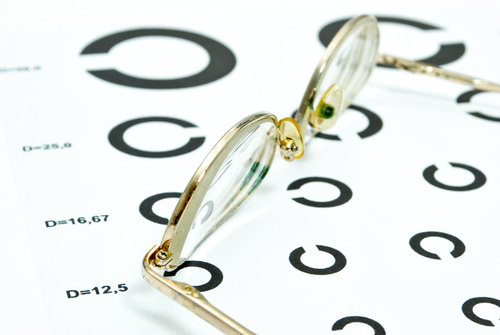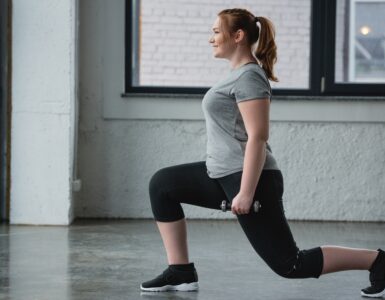Aaron Schuback, Vice-President of Standard Optical, explains how the new optical free vision testing kiosks work.
Somewhere in the world, someone goes blind every five seconds. A child goes blind every minute. At least 7 million people go blind every year, according to the American Academy of Ophthalmology (AAO).
And the thing is? Eighty percent of all blindness is preventable or even curable – a sobering reality, also according to the AAO.
That’s where Standard Optical comes in. The Utah-based company is bringing new technology – in the form of consumer-driven, self-administered, self-service vision-testing kiosks – to Utahns. The SoloHealth EyeSite® kiosks, which are free to use, will be in area grocery stores beginning this month.
“Periodic eye and vision examinations are an important part of preventive health care,” says Aaron Schubach, vice president of Standard Optical. “Many eye and vision problems have no obvious signs or symptoms. Early diagnosis and treatment of eye and vision problems are important for maintaining good vision and eye health, and when possible, preventing vision loss.”
While Schubach emphasizes that the self-service kiosks are not a replacement for a traditional, comprehensive eye exam, the SoloHealth EyeSite technology can provide an initial vision assessment. The machines will then automatically recommend a more comprehensive eye exam with an eye care professional (and will even help schedule an appointment).
“This is really quite amazing technology,” Schubach said. “In less than five minutes, a person can go through a quick vision screening to determine if they need to follow up for a comprehensive eye exam, all while waiting for a prescription to be filled.”
The interactive, touch screen kiosks – the first of their kind in the Western United States – provide consumers with a quick, accurate assessment of their near and distance vision. Additionally, the machines will provide information to consumers on various eye conditions and diseases such as cataracts, presbyopia, glaucoma, diabetic retinopathy and more.
“The kiosks are similar to the automated blood pressure machines, yet high tech and interactive. ” said Bart Foster, CEO and founder of SoloHealth. “Our goal is to help educate people on the importance of eye health. We realize it can’t provide every answer or prevent every problem, but a person can get a very accurate assessment of their eyesight and get a firm idea of what to do next.”
Frequently Asked Questions About SoloHealth EyeSite® Kiosks
Why the need for vision screening kiosks?
Screening for eye health has never been more important. The National Eye Institute says that 50 percent of Americans 20 and older are thought to have a vision problem, most commonly myopia (nearsightedness) or astigmatism (blurred vision). According to Prevent Blindness America, the number of Americans with age-related eye disease and the vision impairment that results is expected to double within the next three decades.
Studies also show that more people are interested in self-directed health care, both to save money and as a way of gaining greater control over their own health. State-of-the-art health and wellness services, like the EyeSite kiosks, are part of a growing trend to enable consumers to access quality, self-guided assessments and information quickly and easily.
By providing an easy to use and FREE vision tool for consumers, EyeSite:
• Measures how well you see
• Helps detect vision problems
• Improves eye health awareness
• Provides important information about serious conditions such as glaucoma, macular degeneration, cataracts, diabetic retinopathy, dry eye, etc.
• Refers consumers to nearby eye care professionals for a complete eye exam
Do these kiosks replace the need to see an eye-care professional?
EyeSite kiosks are not a replacement for a regular eye exam. Rather, they provide a quick and accurate assessment of a person’s near and distance vision, as well as an analysis of other possible eye health risks based on a person’s family and personal health history. The consumer then receives a customized report of the results, which he or she can share directly with an eye doctor.
How does the kiosk work?
EyeSite vision kiosks use optical software that accurately assesses a person’s near and distance vision. An interactive video provides a user-friendly experience that gives consumers a FREE customized assessment of their vision. It also gives them information about common eye health conditions and refers them to nearby eye care practitioners. EyeSite is free, convenient, quick and easy for consumers to use.
How long does the screening take?
The EyeSite screening typically takes between three and five minutes, about the time you would spend in the checkout line at the store.
Could you walk me through of a typical screening?
The consumer sits in front of a touch screen and views an interactive video that asks a series of lifestyle questions that may contribute to current or future eye health problems. The consumer is then presented with various sized letters to determine near and distance acuity. He or she receives a customized report of the results, which can be shared directly with an eye doctor. If the consumer does not have an eye doctor currently, EyeSite can provide referrals to eye care professionals in the immediate area and even arrange for an appointment to be scheduled, all while the consumer is sitting at the kiosk.
The EyeSite kiosks also offers several informative videos on glaucoma, cataracts and other eye health issues for those who wish to learn more about these diseases.
The entire EyeSite screening typically takes 3-5 minutes.
How often should an adult/child get their eyes check?
The American Optometric Association recommends that you have your eyes checked by an eye care professional every 18 to 24 months. Most people, on average, take twice as long between visits to an eye care professional.
The new SoloHealth EyeSite kiosks can be found near the pharmacies at assorted Smith’s and Associated Foods Stores along the Wasatch Front and in St. George. A complete listing and map of where EyeSite kiosks are available can be found by visiting www.standardoptical.net or by calling 1-800 EYE CARE.















Add comment